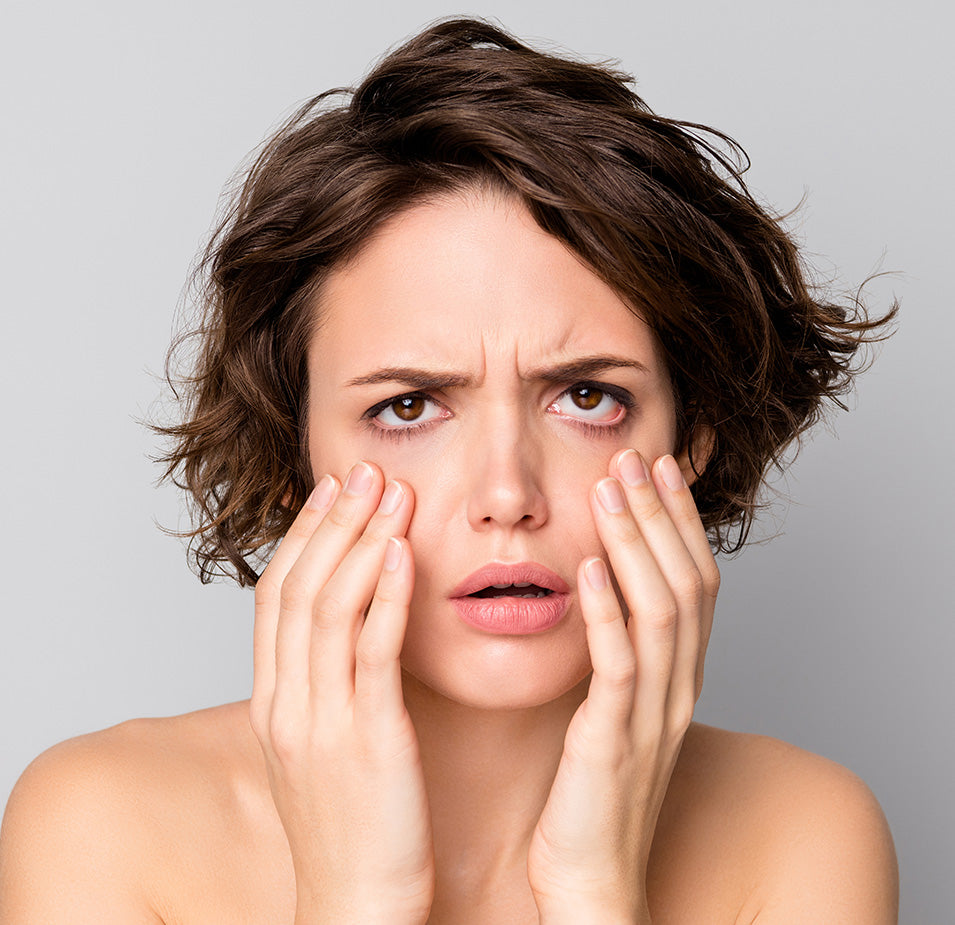
According to a 2017 study, most consumers are either unconcerned with or unaware of poor ethical choices made by cosmetic companies.
You have probably seen words like sustainability, ethics, clean, and vegan to describe beauty and personal care brands. They’re used all the time in marketing materials. But what do those terms really mean?
To truly be an ethical brand, ethics must be practiced on an internal and external scale. Ethical brands should keep an eye on the bigger picture, focusing not only on product packaging, manufacturing, and safety, but also on contributing to the greater good of society.
Fortunately, with this debate, a lot more companies are investing in product sustainability and ethics to enhance various aspects of the business such as production, ingredient transparency, recycling, and providing organic products.
How to evaluate ethical beauty brands: 12 key standards

Many brands claim that they are ethical and sustainable—but are they really practicing what they preach, or are they simply capitalizing on a market trend towards greater demand for “green” products?
As consumers, it’s imperative that we’re empowered with the tools to evaluate whether a brand is truly walking the talk.
The broad concept of sustainability and ethical practices is different for different industries. Whether a product is sustainable or ethical is dependent upon several factors.
So, what are some factors that define an ethical beauty brand?
The below key factors can help you differentiate an ethical brand or product from companies that are simply “greenwashing” empty claims with a pretty label.
1. Cruelty-Free
A cruelty-free label certifies that none of a product’s ingredients were tested on any animal or living being at any stage of production. Further, it means that the company did not harm or slaughter any animal during the research, development, and manufacturing process.
Cruelty-free products are usually certified by an organization like Leaping Bunny. These certifying bodies routinely conduct careful analyses of products to give consumers the data they need to make an informed decision. Leaping Bunny is the only internationally recognized organization, and you can look for their seal on certified cruelty-free products.
The animal rights organization PETA also has its own certification program called Beauty Without Bunnies, which allows companies to supply documentation declaring that their entire process of production is free from animal testing.
Although these certifications can be expensive and not every company can afford to go through the process, having the seal is a good sign that a company is genuinely committed to ethical standards.
2. Vegan and Vegetarian
If a product is labeled as vegan, it means that the company does not use any animal or animal-derived ingredients, such as beeswax, honey, collagen, carmine, or gelatin. PETA offers a vegan certification for beauty products.
Be wary when choosing products based on their labels. Oftentimes, companies will include organic, vegan, or natural ingredients in products and use these ``clean” ingredients as camouflage for other additives. Additional research into a brand may be needed since advertising is not always accurate.
It’s also important to note that vegan products can still contain palm oil. Palm oil is linked to deforestation, harming entire ecosystems. To live by the “do no harm” principle, look for products that are vegan and free of palm oil.
3. Forest-Friendly
Palm oil is a cheap ingredient found in an extremely wide variety of beauty, personal care, and even food products. But serious ethical concerns are connected with palm oil. The extraction of palm oil is a major contributor to deforestation. To increase its production, a vast number of trees are being cut down to make room for palm plantations.
Deforestation can wipe out entire ecosystems and is devastating to the environment. In order to counter this problem, many companies have started using forest-friendly products.
To check whether a particular product is forest-friendly or not, make sure the ingredients list is free of palm oil and look for the FSC label. FSC labeling tells you about the packaging the product comes in using the following metrics:
- FSC 100% guarantees that any wood used in the product comes from an FSC certified forest
- FSC Recycled certifies that the packaging comes from recycled or reused resources
- FSC Mix means that the wood used in the product is either recycled or comes from legally harvested wood
4. Carbon Footprint Awareness
The carbon footprint of a product refers to the total emission of greenhouse gases into the environment as a result of the product’s life cycle, all the way from the extraction of raw materials to the end product consumed.
Currently, there is no specific way to find out how much carbon dioxide is emitted by a particular brand or product. Companies usually measure carbon footprint by analyzing the entire supply chain process from manufacturing to transportation and retail distribution. Many brands are making efforts to reduce carbon emissions by making changes in their production, transportation, packaging, and distribution.
5. Reef-Safe
When venturing into the ocean, using sunscreen is important to protect your health—but it’s equally important to protect the health of the environment around you.
A major concern among ocean scientists is the adverse impact of several chemicals found in sunscreen on marine environments. Two chemicals, oxybenzone and octinoxate, are known to contribute to coral reef bleaching, a process by which living reefs are killed leading to local ecosystem collapse.
In 2018, legislation was signed by the Governor of Hawaii to ban the sale of sunscreens containing oxybenzone and octinoxate. At that time, more than 80 percent of sunblock products contained these two chemicals as their integral ingredient. But many companies took action and started using reef-safe labels.
It is ideal to use natural sunscreens with simpler formulations to avoid harming marine life. Mineral sunscreens that utilize ingredients like zinc to physically block UV rays from penetrating the skin are both more effective and safer for the environment.
6. Diversity
The beauty industry needs diverse representation not just in terms of product portfolio, but also when it comes to the people it caters to and the skin ailments it can treat.
For too long, most personal care products were geared toward a narrow demographic. This has changed in recent years in response to consumer demands for ethical brands to design products and formulations that cater to a broader range of skin tones and ethnicities.
The trend of diversified products become more common after the launch of Rihanna’s makeup brand, which introduced 40 different shades of foundation. Many brands took notice of this company’s success and responded by enhancing their own product ranges.
Besides diverse representation on the consumer and marketing side, the beauty industry should also focus inward and expand representation in other areas such as development, distribution, and hiring.
7. Certified Organic
It’s common nowadays to see products labeled as organic. Just like organic food products, organic beauty products are defined as those produced without the use of pesticides, synthetic fertilizers, herbicides, or any other destructive agriculture practice.
Authentic and globally recognized organic certifications include USDA, COSMOS, NaTrue, and The Soil Association. In order to attain these certifications, companies must execute all the requirements of organic practices throughout their manufacturing process.
However, it’s important to be aware of loopholes that companies often take advantage of when it comes to marketing products as “organic.” Currently, products are not required to disclose preservatives that may be combined with organic ingredients. When shopping for organic products, be specific: are all the ingredients organic, or are the organic ingredients masking hidden chemicals?
8. Real Efficacy
Every brand promotes and advertises how wonderful its product is. But do you really get what is promised?
Advertising regulators, such as the Committee of Advertising Practices and Advertising Standard Authority, are tasked wiith checking the authenticity of brand claims and analyzing whether they are actually delivering what their marketing practices suggest. These organizations exist to prevent consumers from being deceived.
However, it’s important to use your own judgement when evaluating claims made by beauty brands. Don’t fall for lofty, magical claims or expensive packaging. Read reviews from fellow consumers and do your own research before investing in a product and supporting a brand.
9. Clean Supply Chain
Rigorous testing procedures and certification processes are in place to audit the entire process of product manufacturing, transportation, and afterlife. This means that supply chain information should be available for most, if not all, of the companies you buy from. A shortcut to make sure a brand’s supply chain is ethical is to look for the B Corp label. This comprehensive certification looks at the company’s practices holistically.
10. Eco-Friendly
Everyone knows that non-renewable plastic packaging does not decompose and presents a huge a strain on the environment, from overflowing landfills to polluting rivers and oceans. Whenever possible, look for products that use 100% recyclable or reusable packaging.
11. Ethical Human Resources
A crucial part of product ethics is the fair and humane treatment of all employees and staff involved. Brands that respect their moral commitments and uphold a safe work environment can receive certification from the Union for Ethical Biotrade.
12. Batches and Quality
One of the most significant factors contributing to ethical and sustainable practices is delivering high-quality, sustainable products that meet customer requirements and fulfill global standards. This includes labeling the manufacturing and the expiry dates of products so the risk of adverse effects can be prevented.
Ethics Are Beautiful

While personal care is all about looking and feeling more beautiful, keeping in mind the greater good of society is equally important. Choosing brands that prioritize ethics over profits will benefit your health, the health of the environment, and the health of other people. Brands that practice good ethics the principles of doing no harm and delivering on promised results part of their business DNA, both inside and out. Because beauty is such a big industry, choosing ethical brands can truly make a difference.
References
- Gould, P. M. (2017). Making a Difference: the Impact of Corporate Ethical Behavior on Consumers in the Beauty Industry. Retrieved from https://scholars.unh.edu/honors/356/
- Kangas, Cathy. (2017). Cosmetics Industry and Animal Testing. Huffington Post. Retrieved from http://www.huffingtonpost.com/cathy-kangas/cosmetics-industry-andan_b_9081072.html
- Ford, Jonathan. (2007). Natural Beauty, Ugly Beauty. Beauty Packaging. Retrieved from http://www3.rodpub.com/contents/view_euro-style/2007-04-30/natural-beauty-uglybeauty
- Bengtsen, Peter & Paddison, Laura. (2016). Beauty Companies and the Struggle to Source Child Labour-Free Mica. The Guardian. Retrieved from https://www.theguardian.com/sustainable-business/2016/jul/28/cosmetics-companiesmica-child-labour-beauty-industry-india

















